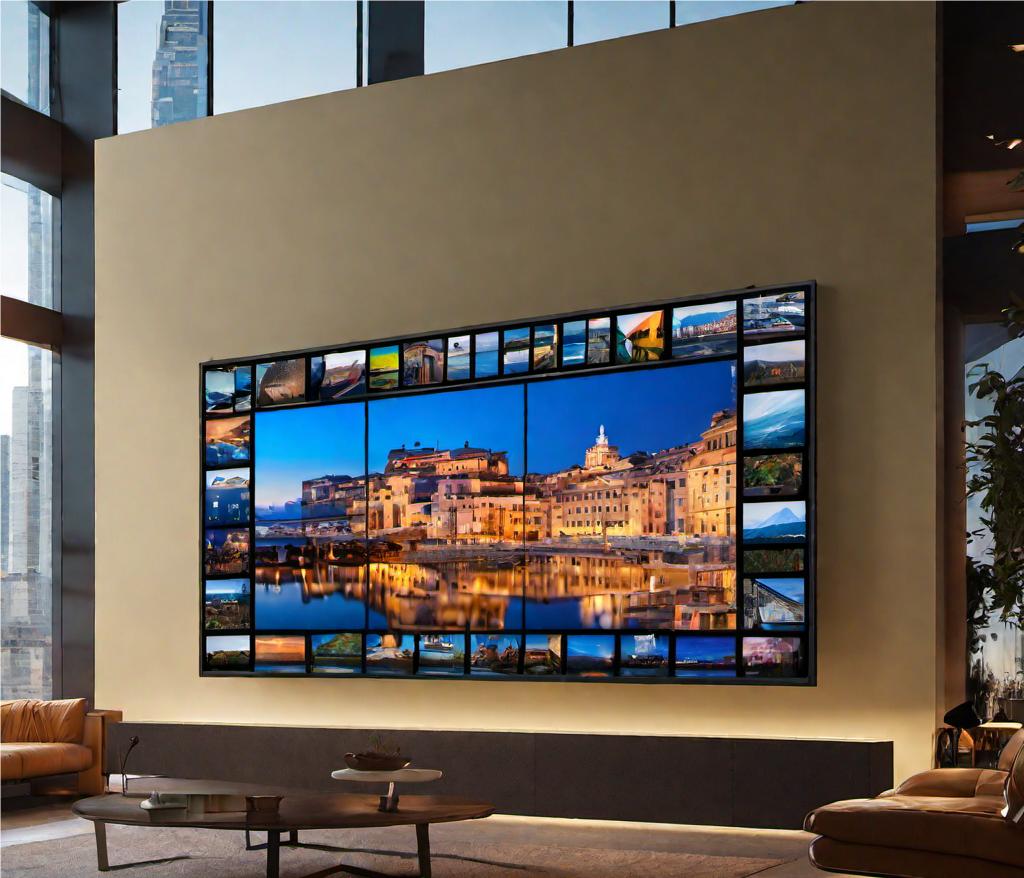Screen Knowledge: What are the differences between LCD wall screens and LED screens, and which one should you choose?

What are the differences between LCD wall screens and LED screens?
LCD wall screens and LED screens can both achieve large-screen displays, but there are differences between these two types of display devices:
Different display technologies:
LCD wall screens use LCD backlighting technology, which is similar to the technology used in household televisions. They can achieve high-definition displays ranging from 1080p to 4K. LED screens use light-emitting diode (LED) technology, where individual LED chips are packaged together to form pixels. LED screens are commonly seen in traffic lights and billboards, but their pixel density is lower.
Different resolutions:
LCD wall screens can achieve high-definition displays with a resolution of 1920×1080, allowing for the display of high-quality images and videos. LED screens, on the other hand, have larger pixel pitch, resulting in lower resolution for the same display area. To achieve higher resolution, a larger display area is required.
Different seam effects:
LCD wall screens have varying sizes of bezels or gaps between the screens, ranging from 5.5mm to 1.7mm on each side, resulting in physical black borders between the screens after splicing. LED screens have lower pixel density, so they don’t have noticeable seams or bezels.
Different usage environments:
LCD wall screens are generally used indoors to meet the demand for high-definition large-screen displays. LED screens are primarily used outdoors as large-scale displays.
Different application areas:
LCD wall screens are widely used in various fields that require high-definition displays, splicing capabilities, and content segmentation, such as product showrooms, conference rooms, news broadcast stations, and control centers. LED screens are commonly used in outdoor areas such as squares, shopping malls, and conference halls, where long-distance viewing is required.
Which one is better: LCD wall screens or LED wall screens?

Advantages and disadvantages of LED wall screens:
Advantages:
- Invisible seams: LED displays consist of unit panels that are equipped with LED chips of different sizes, spacing, and quantities. When assembling a large screen, you need to join multiple unit panels together. The LED display does not have prominent obstacles in the joining process. There are no seamless connections required between the individual panels, nor are there borders like those found in LCD wall screens, making the joining process hassle-free.
- Waterproof and sunproof: LED screens are designed to be weatherproof, making them suitable for outdoor use.
- High brightness: LED screens offer adjustable brightness, allowing clear visibility in different lighting conditions, such as facing or backlighting from the sun.
Disadvantages:
- Lower resolution: LED screens generally have lower resolution compared to LCD wall screens. Even small pixel pitch LED products cannot match the resolution of LCD wall screens, resulting in mosaic effects and lower image clarity.
- Lower contrast: Lower contrast can lead to less richness in the image’s brightness and depth, resulting in a less appealing visual experience compared to LCD wall screens.
- Higher failure rate: LED screens may experience issues such as LED chips falling off or dead pixels more frequently, increasing the need for after-sales support and maintenance costs.
- Requires additional cooling: When installed outdoors, LED screens can generate higher temperatures. To ensure proper heat dissipation, air conditioning may be required, adding extra costs.
Advantages and disadvantages of LCD wall screens:
Advantages:
- High resolution: One of the main advantages of LCD wall screens is their high resolution. The spliced screens can achieve a cumulative high-definition resolution, allowing for clear and detailed displays.
- Moderate brightness: LCD wall screens offer brightness levels similar to televisions, providing comfortable viewing for extended periods without causing eye strain. In comparison, LED screens used indoors may appear excessively bright and potentially harmful to the eyes.
- High contrast: LCD wall screens provide strong contrast between light and dark, resulting in rich and detailed images.
- Stability and durability: LCD wall screens require less maintenance and have lower long-term usage costs.
Disadvantages:
- Visible seams: Traditional LCD wall screens have bezels around the LCD panels, resulting in several millimeters-wide seams. This can affect the viewer’s experience, especially for full-screen displays. Even bezel-less LCD wall screens only achieve a physical reduction of seams and are not truly seamless.
- Limited to indoor use: LCD wall screens primarily use LCD panels, which contain electronic components and are not waterproof. They can only be used in indoor, dry environments.
In conclusion, both types of screens have their own advantages and disadvantages. In terms of display quality, LCD wall screens have the upper hand. However, LED wall screens are more suitable for outdoor large-scale advertising displays. The choice depends on the specific usage scenario and requirements.
